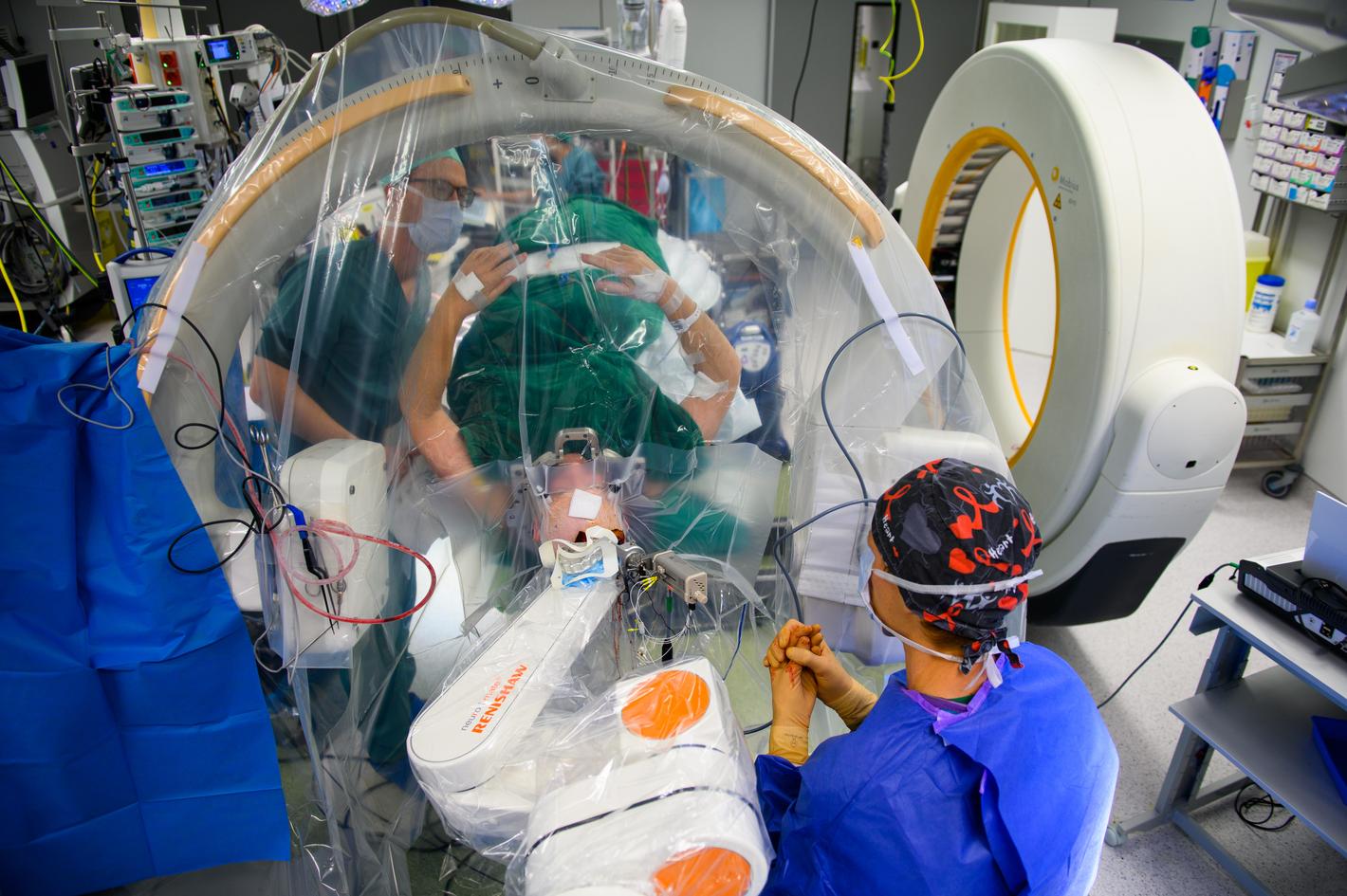Stereotactic robots for neurosurgery are on the rise globally. In Flanders, it is the first time the robot has been used for brain surgery. The surgeon attaches a metal ring on the head of patient, enabling him to make a scan of the brain without the head moving. After that the robot is attached to the metal ring, so that the surgeon can mark the required entry points on the scan for the electrodes and biopsy needles. The robot arm then moves into the correct position.
Whereas previously several mechanical straightening devices were used for this type of surgery, which the surgeon had to set up himself, the brand new robot primarily saves time. The neurorobot reduces the risk of errors when setting the aiming device and works on average 1 millimetre more accurately than a manual setting.
Saves time and more accurate

Prof. dr. Philippe Devloo, neurosurgeon at UZ Leuven: “The extremely accurate stereotactic robot for neursurgery cannot be compared with surgical robots such as the ones we have been using for a number of years for urological or gynaecological surgical procedures. For that type of robots, the surgeon controls the robot from a distance, whereas our robot functions as a partner who points out where we can insert electrodes or needles into the brain. For both doctors and patients, the robot is a huge asset in terms of time savings and accuracy. Given the fact that most patients are awake during deep brain stimulation, it is more pleasant for the patient the procedure is over more quickly. What's more, the robot makes it easier to shave a little as possible of the patient's hair.”
The department of neurosurgery at UZ Leuven will not only use the robot for deep brain stimulation, but also for implanting electrodes to detect epilepsy and for performing biopsies in extremely delicate brain regions, such as in the brainstem.